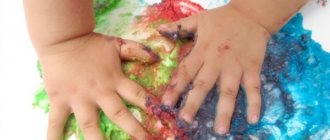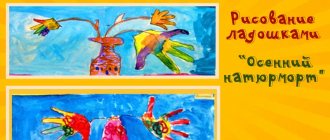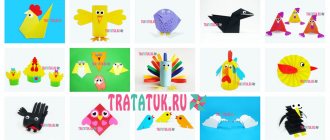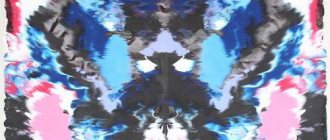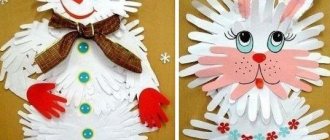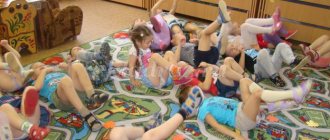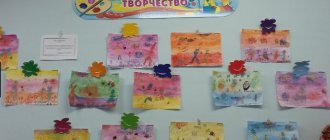Translated into Russian, the word “still life” means “dead nature”. To put it simply, such a painting depicts inanimate objects in a certain color scheme and with a characteristic fall of light and shadows. It is very difficult to depict a visible composition using pencils and paints, to convey all the shades, mood and spirit. Therefore, to simplify the task, conventional artists began to divide compositions into categories. They may depend on the time of year, on the colors and on the objects that are depicted. Now we will look at an autumn still life, get acquainted with its color scheme, style and other features.
Features of autumn still life
Sometimes it seems that painting pictures of autumn is the most exciting activity. They contain a huge number of shades, but they are all in the same color scheme - warm, red and yellow. An autumn still life can be dark, saturated or light, transparent, but in both cases the colors will be bright and expressive. The background may catch your eye, for example, painted objects are standing on the window, and behind the glass you can see a bright blue sky. In a similar way, attention can be drawn to objects located in the foreground of the picture.
As a rule, an autumn still life shows us the gifts of this season, its features, which are not only in colors. These can be pictures of the harvest (apples, pumpkins, grapes), images (asters, chrysanthemums), with which household items are certainly combined - vases, pots, chests, etc. Among the artists who painted such masterpieces, Eduard Panov, our contemporary, occupies a place of honor. His work contains floral motifs and other autumn attributes.
Summary of a drawing lesson in a preparatory school group.
Program tasks
.
To consolidate knowledge about the genre of painting - still life, to give an idea of composition. Show the role of the color background for a still life. Learn to draw a simple composition of three or four objects in watercolors. Introduce the concept of “highlight” and how to draw it. Learn to convey the shape, color and size of objects in a drawing. Develop a vision of aesthetic beauty in still life
Equipment and materials
.
Reproductions of still lifes, still life (nature) Watercolor, sheets of white paper for watercolors in A4 format, brushes (squirrel No. 1, 2, 4), cups of water, wet wipes for each child
Progress of the lesson
.
Educator:
- Guys, remember when we looked at paintings and got acquainted with one of the genres of fine art - still life? Let's look at one of these paintings today - a reproduction from the painting by I. T. Khrutsky “Flowers and Fruits”.
- What do you see in the picture? (Children's answers)
This painting is called “Flowers and Fruits”. Why did the artist call it that? (Children's answers)
—
What genre of painting does it belong to?
Still life translated from French means “dead nature,” but this name does not define the entire essence and diversity of this genre. Looking at still lifes, we can observe the richness of the natural world and the world of things surrounding humans. Artists, depicting ordinary things, show their beauty and uniqueness. In still lifes, things speak about themselves, invite us to admire the beauty of their shape, texture, color, and make us feel the aroma.
— What is the difference between natural fruits and flowers and those depicted in the picture?
— What color of fruit did the artist depict?
— What do you see as the beauty of this combination and form?
— What first of all attracted your attention?
Invite children to find the compositional center of the picture, pay attention to the combination of colors, i.e. color.
Visit us today
Autumn has arrived
I left some gifts, I asked you to pass them on
What if we like this treat,
Then we can draw everything without delay.
What has the generous autumn prepared for us? Look how beautiful the fruits are!
(Children look at fruits, describe their shape and color)
Invite the children to make a composition out of them in a vase. Say that objects in the composition may partially cover each other, for example, an apple may lie on the table in front of a vase.
Show children how to correctly sketch the main details with a simple pencil - when drawing a still life from life, it is important to accurately convey the position of objects and all the details. The line should be barely noticeable so that it does not show through the watercolor later.
The next stage of work is laying the tone. Without drawing details, in general, a light tone is applied in watercolor. Once dry, a more saturated one is applied to highlight the dark parts. The main thing in watercolor is that it remains transparent. Draw children's attention to the fact that when objects are illuminated, light reflections are visible on them - depending on the lighting from one side or the other. To convey the highlight in the drawing, a light tone remains in its place, a dark tone is not superimposed.
(Turn on low music, children get to work
)
When finished, review all the drawings with the children and come up with a name for your still life.
Different pictures of autumn
It is worth noting that autumn as art has come a long way from antiquity to the 21st century, and over the centuries people have depicted everything that surrounded them, including paintings of autumn. They became most plausible in the 19th century, when the trends that followed them also became relevant. Among the masterpieces of that time, A. Gerasimov’s painting “Gifts of Autumn” deserves attention. The name of the canvas speaks for itself - it represents the golden age in all its glory.
Drawing “Autumn Still Life” with Children – Masters Fair
Stage 1. We carry out the layout. Outline the general shape of the objects. Pay attention to their location. Mark the largest pumpkin first, then the zucchini and beets.
Stage 2. Draw in the details. Work from larger to smaller.
Stage 3. Do your work in color. Wet the sheet with water and let it dry. Outline the outlines with the main color. Pumpkin - orange, zucchini - dark green, beets - dark red and purple.
Stage 4. Do it in color. Place strokes in the shape of a pumpkin. From the light side, add warm colors - yellow, red. On the shadow side - cool colors (blue, green).
Stage 5. Complete the beets with blue, purple and red colors. We place the strokes in a circle.
Stage 6. Make the stripes on the zucchini with ocher, and the zucchini itself with dark green paint. In the light, mix it with ocher or yellow, in the shade with blue.
Stage 7. Make the plane behind the vegetables with vertical strokes, and the table with horizontal strokes.
Stage 8. Work on the details of the still life with a small brush.
Stage 9. Make a shadow with horizontal strokes on the plane.
Stage 10. Frame your work.
www.livemaster.ru
Still life 1: vase with autumn leaves
Materials and tools
To work we need:
- album sheet for drawing,
- a simple pencil;
- watercolor or gouache paints,
- brushes for painting;
- vase templates;
— leaves of different trees and, of course, a good mood!!!
Vase templates can be of different shapes (see photo of options). You can make your own vase template of any shape.
Step by step description
Step 1.
Trace the vase template on a piece of paper and attach several leaves you collected to the circled drawing. Try to use them to create a still life composition “Bouquet of autumn leaves in a vase.”
Step 2.
Trace the leaves onto the paper. Pay attention to the direction of the veins on each circled leaf.
Step 3.
Paint the vase and leaves with paints. Try to point the brush in the direction of the veins. The leaves can be painted in one color. It’s better to place different paints on the palette and dip the brush into several colors of paint at once, and then paint with it. Or add small specks of a different color to the painted surface and lightly wash them with water.
Try it, experiment! Good luck in your creativity!
This is what the children did: examples of children's still lifes.
Creative task:
Draw a template for a different shaped vase. Make your own bouquet of leaves in a vase and draw it.
Autumn still life with rowan berries and apples
I suggest you draw an autumn bouquet of rowan berries and apples.
We will need: a simple pencil, gouache, A3 paper, pony (squirrel) brushes No. 1,3, 5 and 7, bristle brush No. 5, palette. We outline a vase, apples and a table with a simple pencil (do not press too hard on the pencil).
Using a brush No. 7 and blue gouache, use circular strokes to paint the upper part of the sheet.
We paint the table horizontally with brown and black paint.
Let's move on to the bouquet, for this we take a brush No. 5 and red, brown and green gouache and with chaotic strokes over the vase we create a “cap” of foliage (it should not be very light, rather dark, so that the drawn foliage and berries look contrasting).
As always, I got carried away and skipped the stage of drawing apples; when I woke up, they were already drawn. Therefore, I decided to draw this stage on a separate sheet. We paint the apples with a brush No. 5 and yellow gouache, trying to make strokes in a circle, repeating the shape of the apples.
Add orange strokes, do not make sharp borders
Use red gouache to draw the outline of the left apple and smooth the border with an orange-red mixture.
At the bottom of the right apple we draw a line with red gouache
and stretch it with a brush in an upward motion.
Let's add some orange strokes.
We make highlights with white and yellow gouache.
Mix a little yellow and green gouache on the palette, make indentations on the apples: on one in the center, on the other on top and on the side. Let's add red-brown strokes below - this is the shadow. I hope everything is clear from the photo.
We paint the cores with black paint. We use white gouache to enhance the highlight area.
We blur the boundaries of the black core with brown paint.
Using a brush No. 3 and brown gouache, we paint on the sticks near the apples, make light on the sticks with ocher, and shadow under the apples.
Now let's get back to the mountain ash. Take a paper napkin, crumple it randomly, apply a little scarlet/red gouache on it and print it next to the “head” of foliage.
We paint the vase with ocher.
Apply brown strokes to the vase and make a shadow. Now the reflex - the reflection of light from the apples, will be yellow-red at the bottom of the vase, and red at the top of the rowan tree.
White strokes - highlights - are the most illuminated places, the vase becomes voluminous.
Mix yellow, green and a little white gouache and use a brush No. 5 to paint rowan leaves. You can add green, dark green, light green, ocher leaves.
We paint the branches with brush No. 3, using light green color.
Using white+brown gouache we paint the light on the table.
And the final chords... We need a bristle brush No. 5 and red gouache (with an almost dry brush), we draw bunches of rowan berries with a poke.
And now with the same brush, but with orange paint.
Using white gouache we draw light on the mountain ash.
We paint the branches with a thin brush No. 1 and brown + black gouache.
We put black dots in places on the berries and that’s it, the work is finished.
And finally, the works of 5-year-old artists.
stranamasterov.ru
Preparing to make a still life with autumn leaves with children
Autumn is a wonderful time, the richest time of the year in the most beautiful bright colors of nature. If you want to get inspired and admire the colors of autumn, then take a walk in nature and collect a bouquet of fallen leaves. We will need them for our creative children's autumn still lifes.
When you return home, lay out the collected leaves on white paper and look at them carefully with your children.
You will make sure that you do not find two leaves that are exactly the same in size, shape and color. Some leaves are elongated and long, others are round, and others are carved. Please note that some leaves have smooth edges, others have small teeth, and others have larger teeth. But the maple leaf has a special shape. How can you describe it? Think and together with your child determine which trees did you collect leaves from?
And of course, pay special attention to the fact that each leaf has its own color, that one leaf is painted in one color, and the other has different colors and shades.
List the colors of autumn with your child (you will use them in a still life). A poem will help you
Autumn uses a long thin brush to repaint the leaves. Red, yellow, gold - How beautiful you are, colored leaf! And the wind puffed up its thick cheeks, puffed it up, puffed it up. And I blew, blew, blew on the colorful trees! Red, yellow, gold... The entire colored sheet flew around! (I. Mikhailova)
And now we are ready to draw still life with the children. We will draw a bouquet of autumn leaves in a vase.
